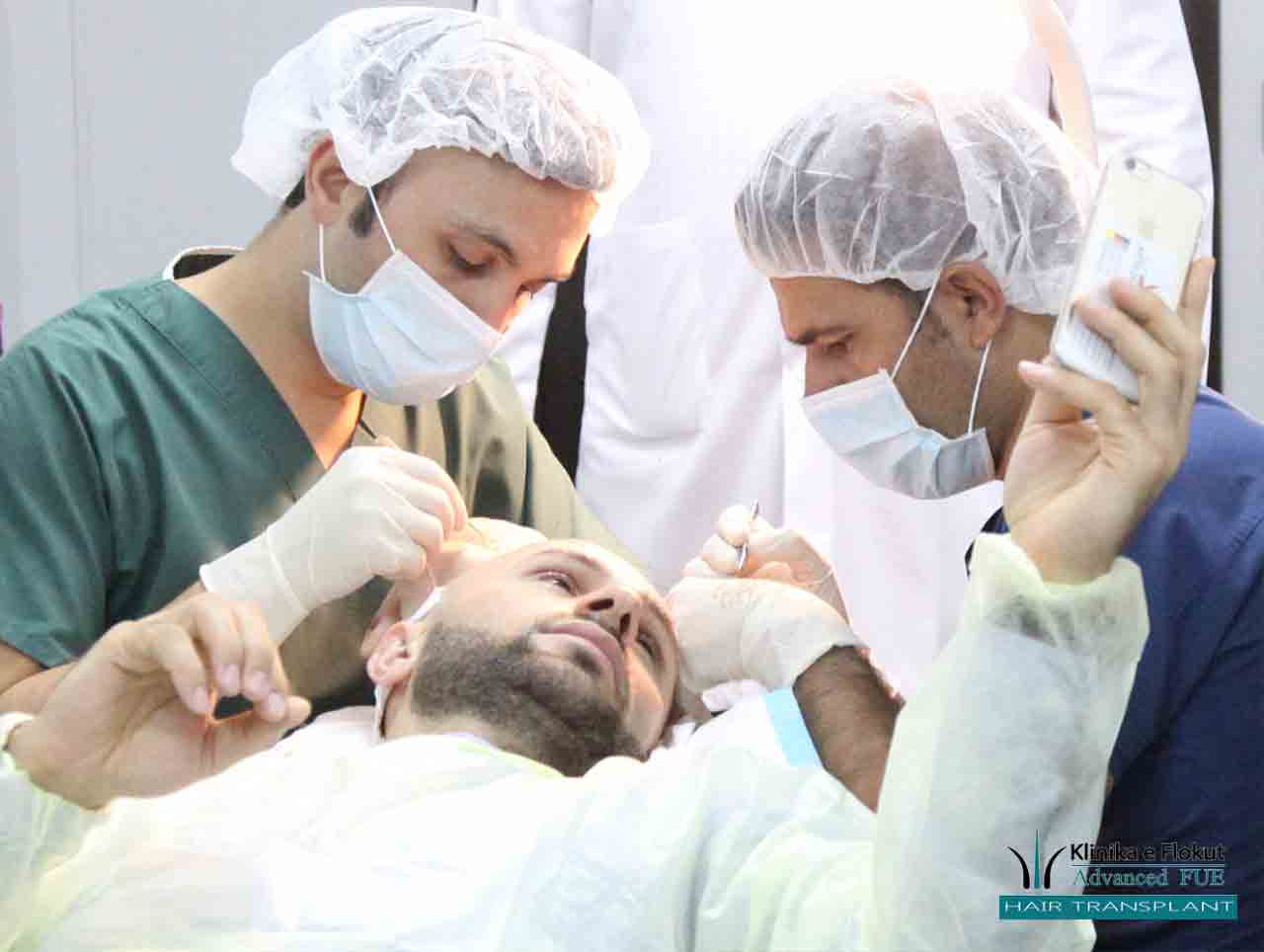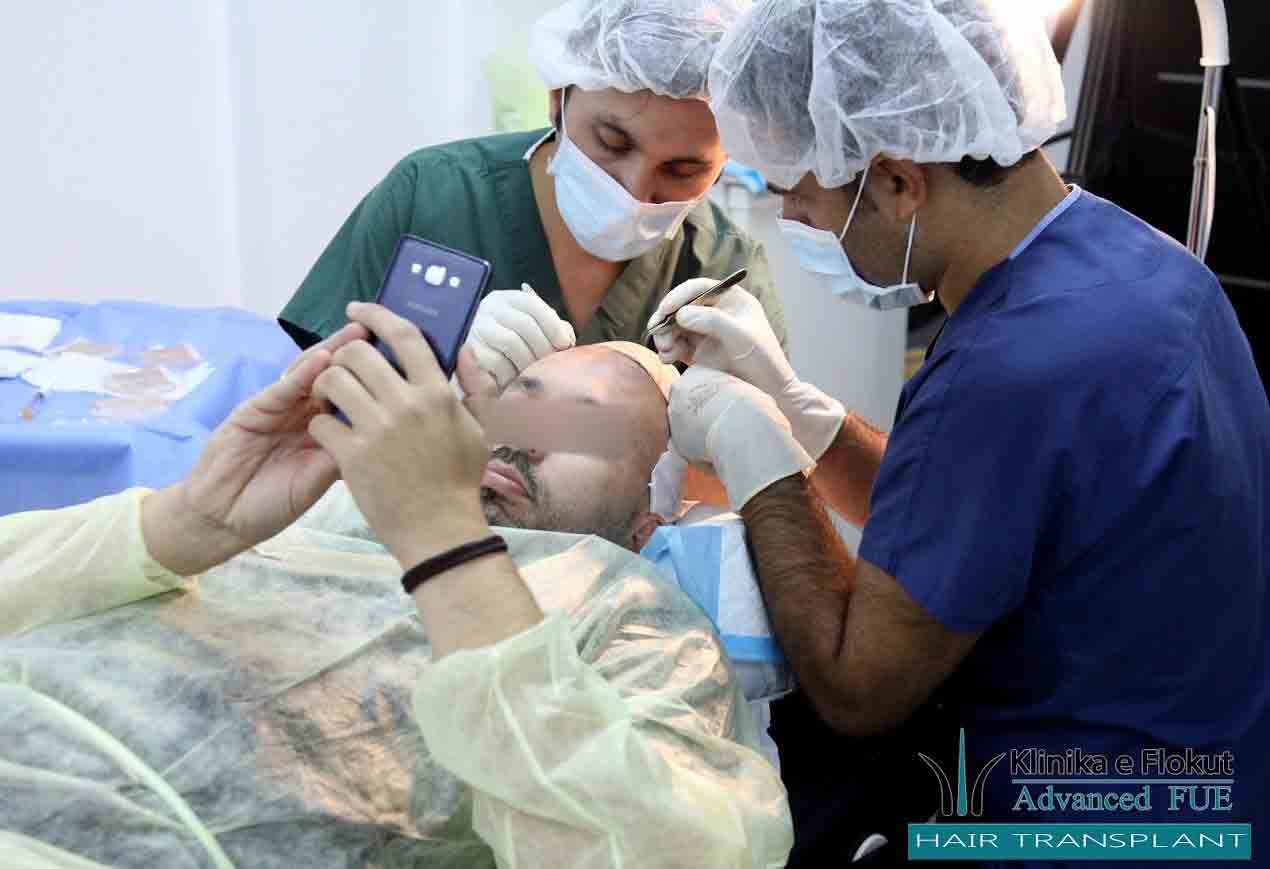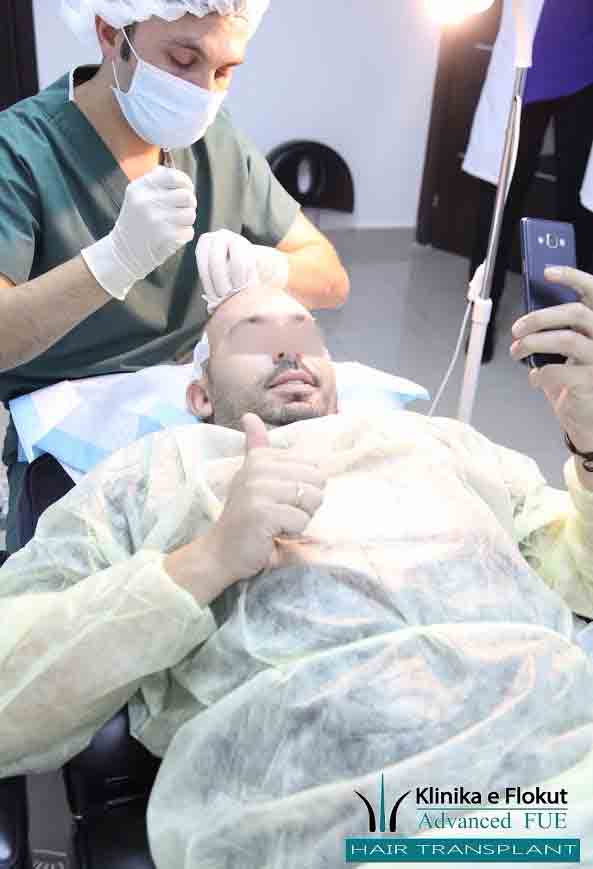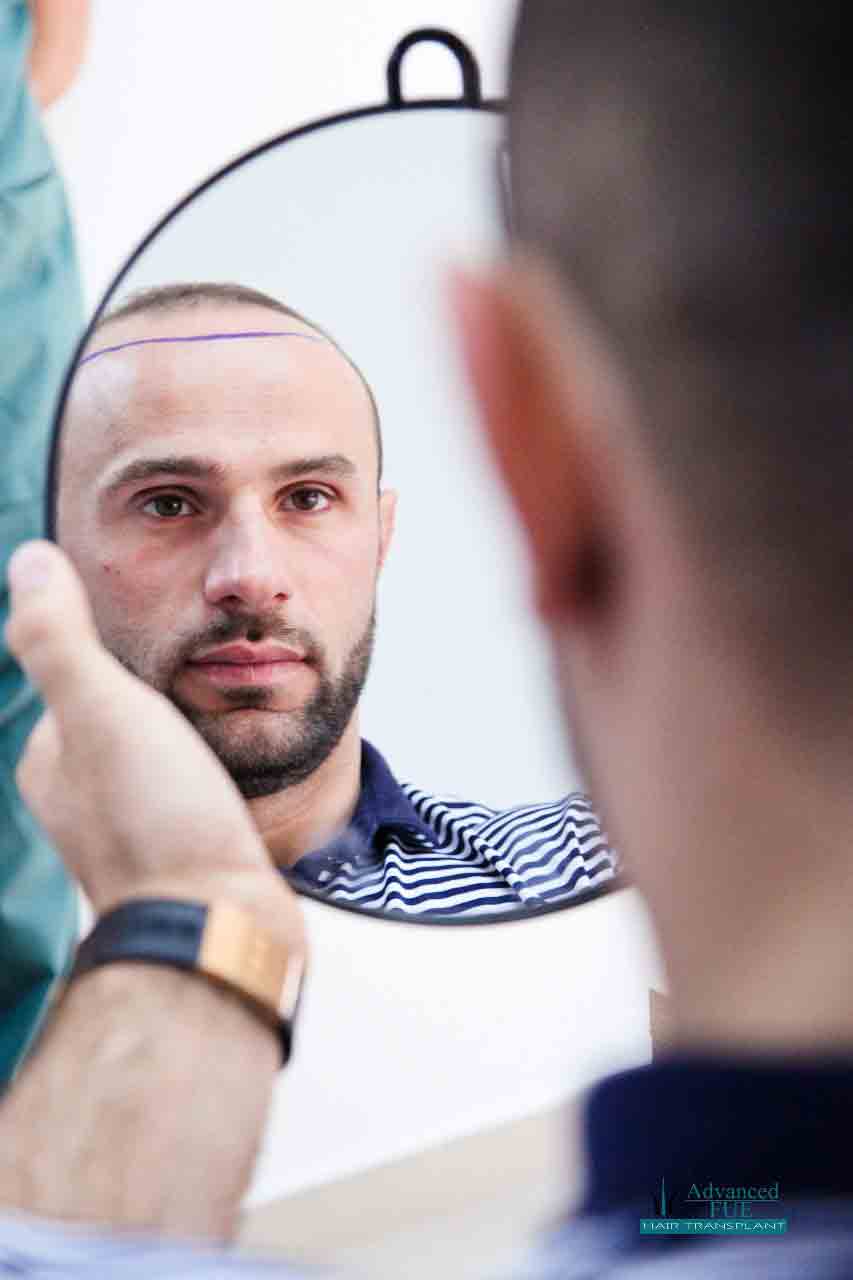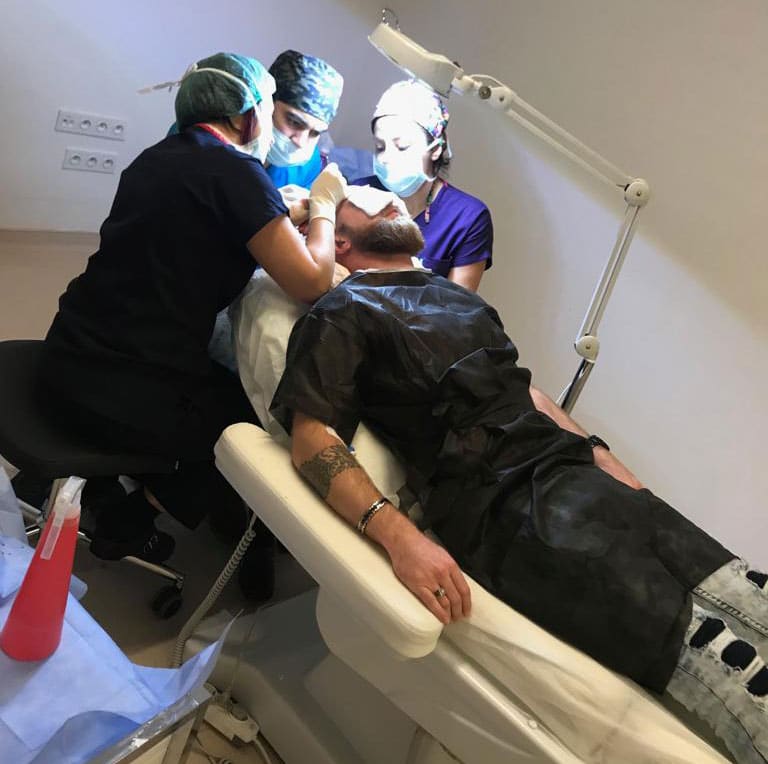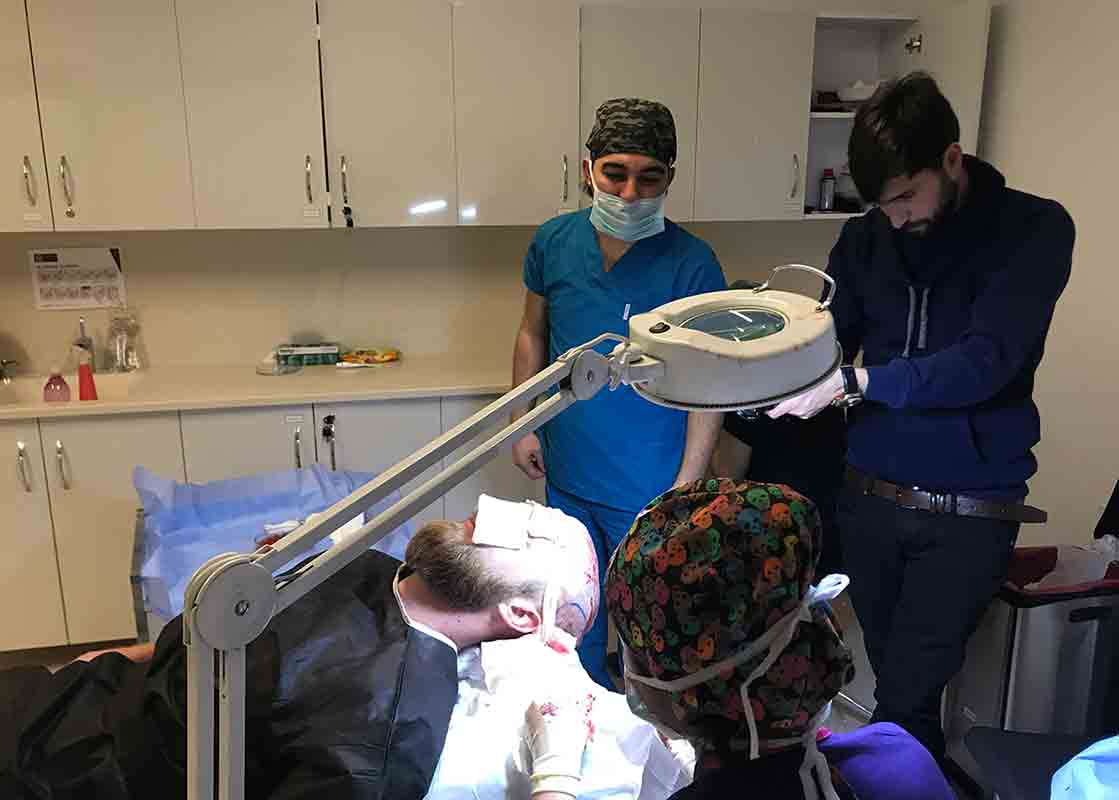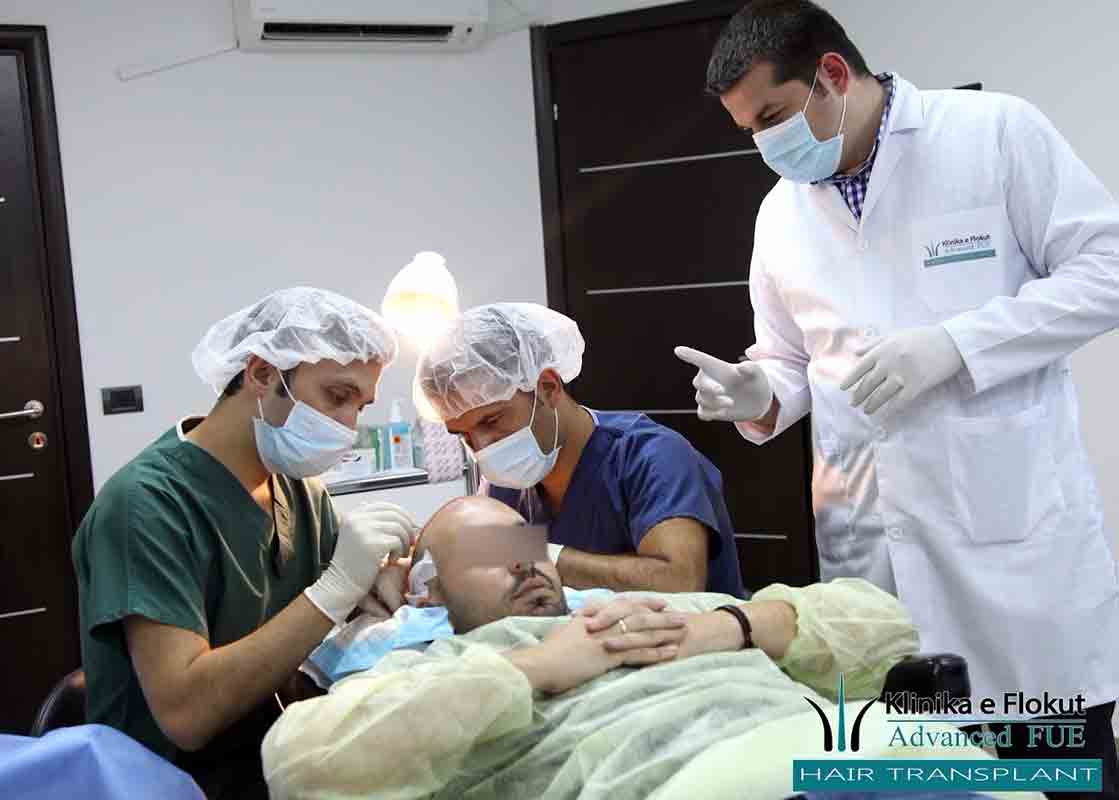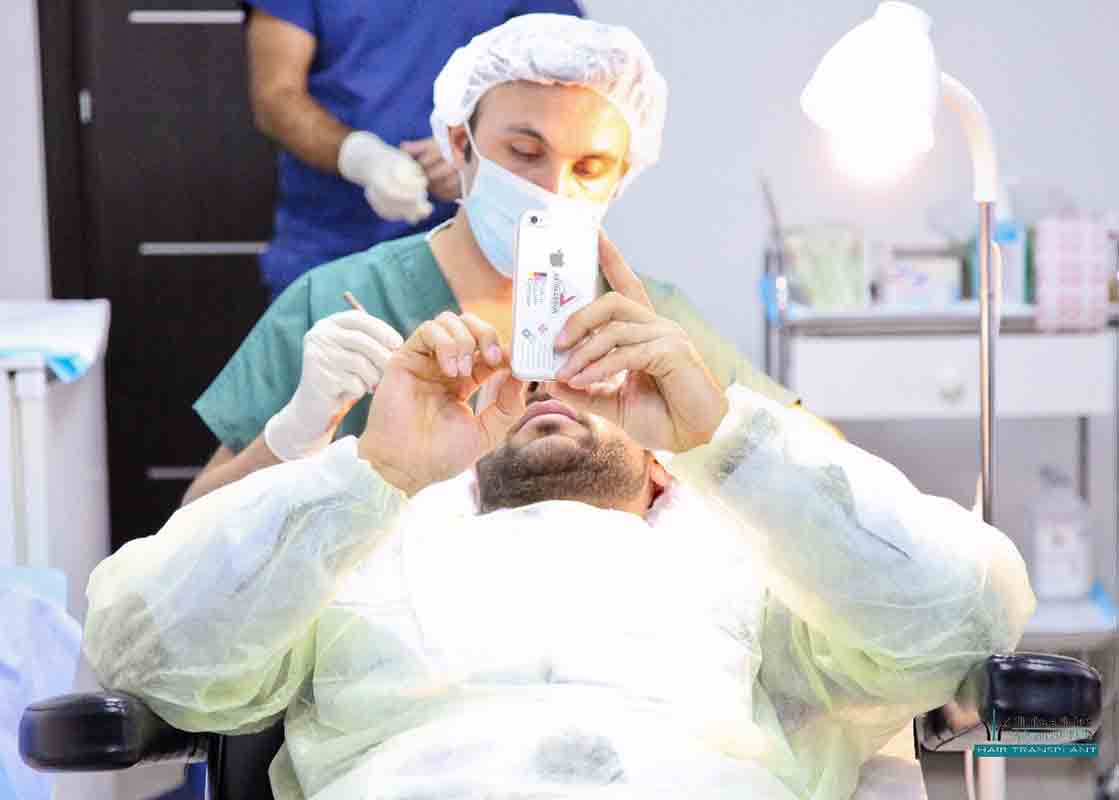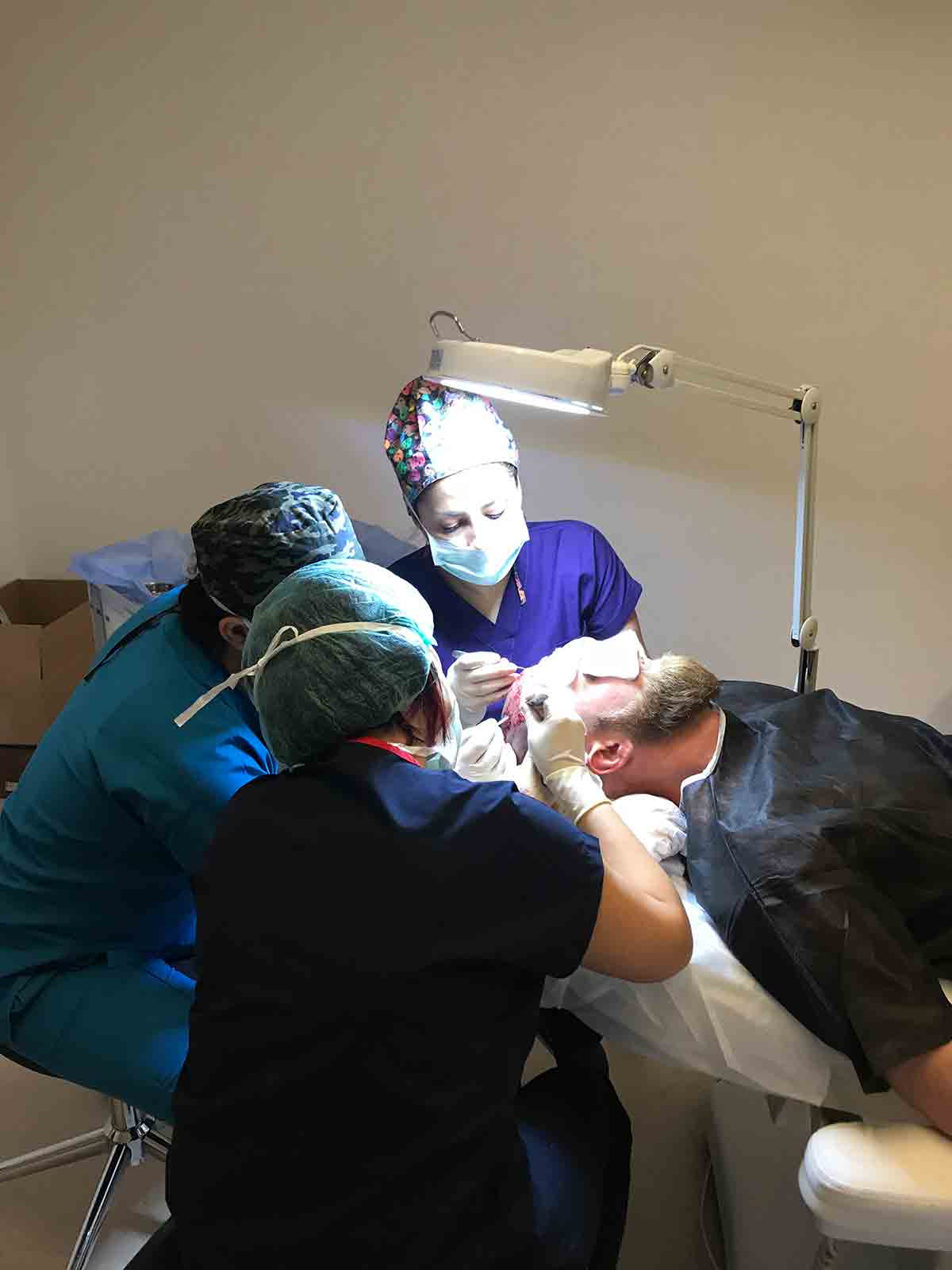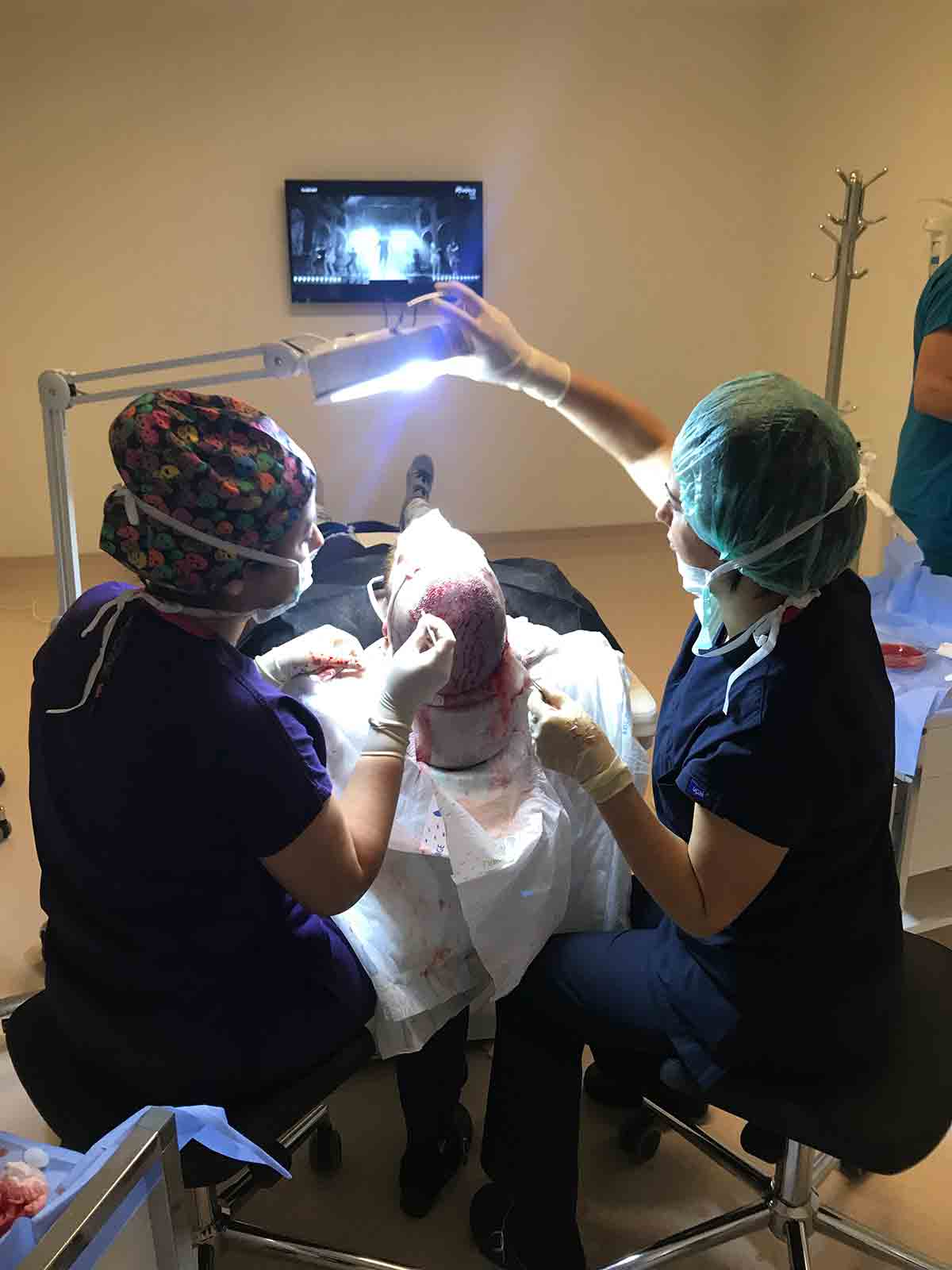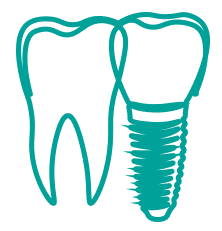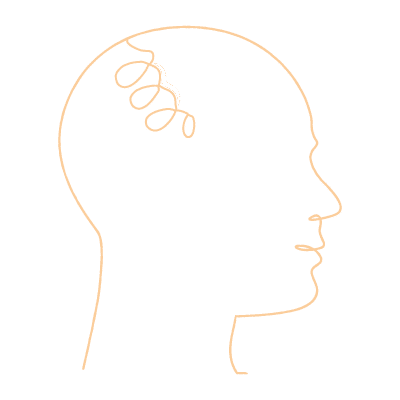There are several hair transplant methods, in this article we will review the 2 leading methods on the market. The Micro FUE (Follicular Unit Extraction) method and the
DHI (Direct Hire Implant. First let's understand that the DHI method is based on the Micro FUE method.
hair transplant The Micro FUE method is a method that actually upgraded the previous FUT hair transplant method which is similar in name but not in performance. In the previous method, the transplant was performed by separating a strip of skin from the back of the scalp, separating the follicles and inserting the follicles in the place of baldness into the pores. This method created a scar along the entire nape of the patient's neck - sometimes you can see past transplant recipients with a tattoo on this scar.
The Micro FUE method is more advanced and has many advantages over the previous method. The method is the oldest of the hair transplant methods and was first implemented in 2002 and in fact has accumulated over time knowledge, consequences and the best results of all. The recovery process is fast and already a week after the procedure most of the transplanted hair follicles will start to grow.
The uniqueness of the method is that the follicles are removed from the donor area with a device called Panatz.
The device comes in different diameter sizes that are chosen according to the size of hair the patient has in the donor area.
The method allows for greater precision in removing the follicles, less damage to the hair follicles around the resulting follicle, and the ability to remove a larger amount of follicles from each donor area.
The advantages of the method
- Allows the transplantation of a greater amount of follicles than the previous method which was limited (mainly due to the way the follicles are removed from the nape of the neck)
- A process that is not accompanied by pain - what characterized the previous process that hurt significantly more
- Shorter recovery process.
- A process that does not involve scars on the scalp.

in the last decade Hair transplants using the Micro FUE method are performed almost exclusively all over the world. A method that combines minimum pain and maximum success.
All hair transplant methods are divided into two parts in the treatment process
the first part - Removing the implants and preparing them for transplantation from the donor area.
The second part - Transplanting the patient's own hair back to the bald areas.
Some of the different methods and nuances that exist in the market today talk about these two steps and how they can be carried out efficiently, saving time and with the greatest effectiveness in order to maximize the amount of implants that are taken out, preserve them properly until the re-implantation process and return them to the head in an aesthetic manner and at the correct depth and angle so that their absorption in the new area will be maximum.
The donor area - in all methods is usually the nape of the neck to the sides of the ears from the back down.
It must be understood that every follicle that comes out of the donor area - does not grow back there again, therefore the removal of the follicles must also be done in a professional manner in order not to cause noticeable baldness in the nape of the neck.
This is also why we are limited in the amount of follicles that can be removed without causing irreversible damage to the donor area.
The hair in this area is always stronger and thicker compared to any other area of hair that grows on the scalp, therefore it is considered transplant-resistant hair and its absorption results are higher.
Sometimes in the case of a less good donor area in the back of the neck - narrower and significantly smaller, you can try to take a donation from the beard hair or even the patient's chest.
The main reason why this option is rarely used is related to the DNA of the hair - how it grows, its shape, the size, thickness and length of the hair are related to the area of its growth.
For example, hairs on the eyebrows or in the chest area do not grow as long as the hair on the head. Or sometimes the chest hair is straight when the head hair is curly or vice versa.
Transplanting a type of hair not in its original area can make the transplant less natural and less integrated in the transplanted area.
Micro FUE method
In the Micro FUE method, the first step as mentioned is the removal of the hair follicles from the donor area.
The entire process is performed under local anesthesia only - at the beginning of each stage we inject the local anesthetic in a new and unique device without needles that works on an air pressure technique And this first injection procedure is painless!!
The client at this stage lies on his stomach with the back of his head facing the care team.
In addition to anesthesia in the donor area, there is also an injection of fluids that will help the doctor and the care team to remove the follicles more easily without injuring the follicles.
The work here is done manually by a skilled team, the follicles are found one by one, while distinguishing, sorting and filtering quality follicles.
The follicles are arranged on white pads soaked in a solution mixed with blood taken from the patient before the procedure. The follicles wait in a clean environment for the completion of the first stage, before being returned to the transplant area.
pay attention - In procedures in which the transplant is offered spread over two days, the follicles originating from the donor area are outside the head for more than 24 hours and are returned for transplantation only the next day. Even if you try to keep them in sterile conditions and at the right temperature, it does not contribute to the quality of the implantation and the quality of the follicles is necessarily compromised. Transplantation of the follicles on the day of their removal contributes to maintaining the quality of the follicle and to the results of transplantation and a better and greater uptake of follicles.
the stage The second in the Micro FUE method is the transplantation of the hair follicles in the area of baldness.
The follicle retrieval technique is the variable among the variety of methods.
In the Micro FUE method, follicle retrieval is divided into two stages - in these stages the patient lies on his back face up, he can watch TV, listen to music, play with his cell phone, talk to his family and even sleep.
In the first stage, the follicles are prepared, small canals are built for them by careful and precise perforation and in an aesthetic layout that redraws the hairline on the scalp. Again, this is very skilled manual work because it prepares the final "painting" of the hair on the scalp. In these canals new hair follicles will enter and they will grow hair in the ice area according to the shape of the "painting" made by the person who punctures the canals - it is usually acceptable and desirable that this step is carried out by the most experienced person in the team, in the team of My Hair It is performed by the doctor leading the team. The doctor himself punctures the canals. To perform this process the doctor uses in sapphire blades, The use of which has been proven to be more efficient and effective in the transplantation process, helping to heal the incision faster and without leaving a scar on the scalp in the process.
The second stage - performing the transplant. At this stage, at least 2 staff members work on the patient, who gradually and according to an orderly method of work return a follicle to a follicle held by a special thin tweezers and with the help of it insert the follicle into the perforation channel made by the doctor on the bald area.
This is the longest stage in the process, a stage in which the follicles are gently and manually closed into the canals. This is a stage that requires a lot of patience from the patient and especially from the operating team. Requires great skill to correctly insert the follicle, not to damage and damage the follicle while inserting it. The goal is to allow as many follicles as possible that left the head to return to the head and be implanted there in a correct and professional manner, so that they all absorb properly and succeed in growing hairs in every treated spot.
DHI method
A method that was developed based on the features and capabilities of the Micro FUE.
As described in the Micro FUE method, also here in the DHI method, the entire first step of removing the follicles from the donor area is exactly the same.
The differences are in the second stage of returning the follicles and transplanting them into the bald area.
In this method, a special pen is used that is used both to puncture the canals and to transplant the follicle in one operation.
The care team takes the follicle from the pieces of pads on which they were placed with thin tweezers and inserts the follicle into a special pen.
The pen is built at the end with a thin slanted knife, the therapist in the first step performs the perforation and creates the channel and in the second step presses a spring in the pen that throws the follicle into the channel created in the first operation.
The prominent advantage of the method - that it can shorten the treatment time for the medical team, an advantage that is mainly financial for the clinic and the treating team but not necessarily for the patient. Also from a marketing point of view, the method is very attractive to clinics and in most places a higher rate will be charged for performing a transplant using this method.
The teams and clinics that work with this method, as well as professional hairdressers on the subject, describe that the insertion angle of the pen can be better for the implantation of the follicle.
Working with the pen requires great skill and requires that this operation be performed by a doctor only.
The big notable disadvantage of the method is that the initial "drawing" of the transplanted hair lines is not done before the transplant (in the piercing phase) but during the transplant. This does not allow the doctor, the painter, to see the full picture of the work and direct and plan it in advance.
Puncture work that is carried out simultaneously with implantation requires a much higher aesthetic skill in order to achieve a good aesthetic result.
Some argue that the insertion of the pen is rougher and its injury to the skin is greater, therefore in areas that are not completely bald (thinned hair areas that transplant additional follicles between the existing and active follicles) the insertion with the pen can cause damage to active and living follicles in the transplanted area.
That's why in the clinics that perform DHI transplantation, you can get price offers and different treatment methods depending on the area that needs to be treated. Customers who need to perform a transplant on mixed areas that have both large bald patches and active hair follicles - you will not receive an offer to perform it with the DHI method but with the Micro FUE method.
For example, in eyebrow transplantation - which is a small area that requires precision and different implantation angles along the eyebrow drawing - the treatment will usually be performed with the Micro FUE method, which allows for maximum precision and a more perfect aesthetic performance.
Continued
In conclusion
The Micro FUE method is an old and safe method, and when it is performed by experienced and professional skilled hands, it can give a more aesthetic and natural final result to the patient than any other method. Over the years, more studies and improvements were made in it, which made the method the leading and successful one most in the global market of hair transplants.


